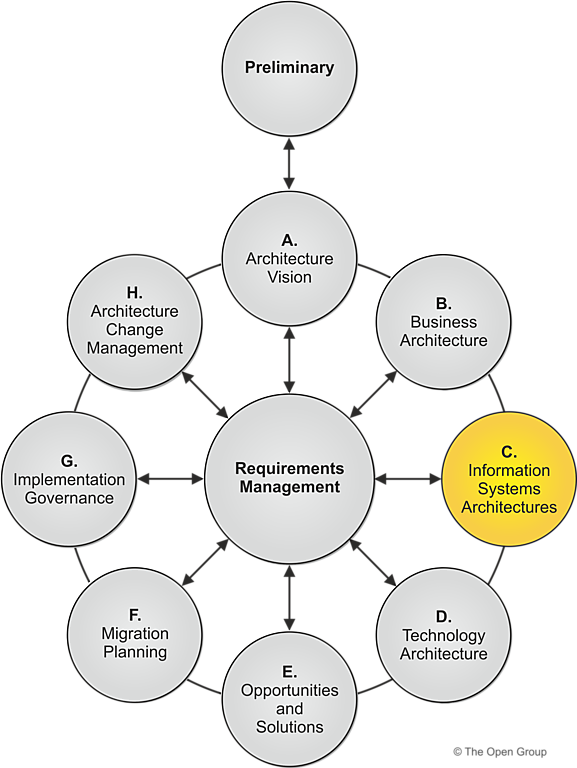5. Phase C: Information Systems Architectures
This chapter describes the Information Systems Architectures for an architecture project, including the development of Data and Application Architectures.

5.1 Objectives
The objectives of Phase C are to:
- Develop the Target Information Systems Architectures, describing how the enterprise's Information Systems Architecture will enable the Business Architecture and the Architecture Vision, in a way that addresses the Statement of Architecture Work and stakeholder concerns
- Identify candidate Architecture Roadmap components based upon gaps between the Baseline and Target Information Systems (Data and Application) Architectures
5.2 Approach
Phase C involves some combination of Data and Application Architecture, in either order. Advocates exist for both sequences. For example, Steven Spewak's Enterprise Architecture Planning (EAP) recommends a data-driven approach.
On the other hand, major applications systems — such as those for Enterprise Resource Planning (ERP), Customer Relationship Management (CRM), etc. — often provide a combination of technology infrastructure and business application logic. Some organizations take an application-driven approach, whereby they recognize certain key applications as forming the core underpinning of the mission-critical business processes, and take the implementation and integration of those core applications as the primary focus of their architecture effort (the integration issues often constituting a major challenge).
Detailed descriptions for Phase C are given separately for each architecture domain:
- Phase C: Information Systems Architectures — Data Architecture (see 6. Phase C: Information Systems Architectures — Data Architecture)
- Phase C: Information Systems Architectures — Application Architecture (see 7. Phase C: Information Systems Architectures — Application Architecture)
TOGAF is a registered trademark of The Open Group
 return to top of page
return to top of page